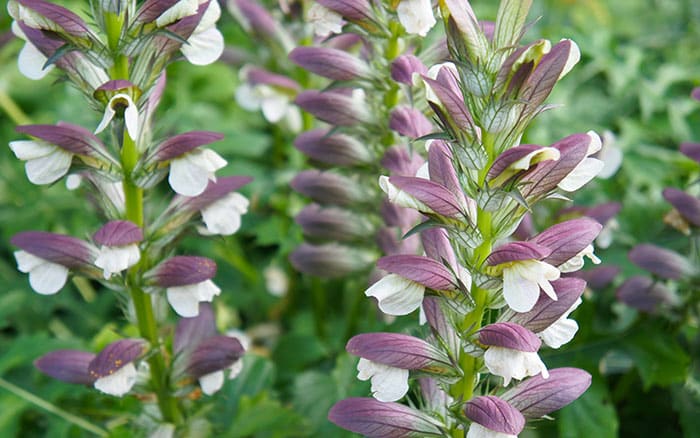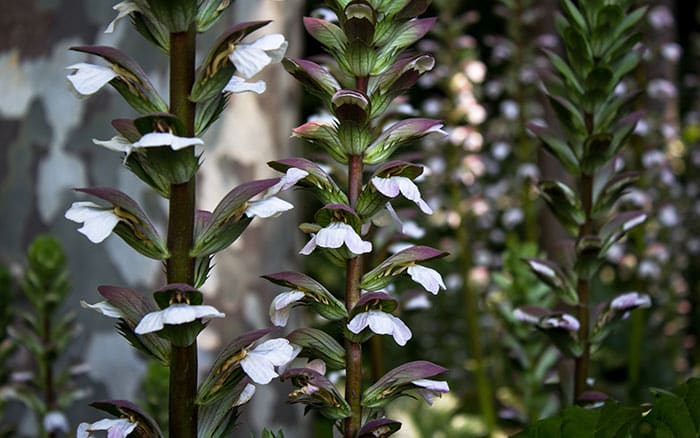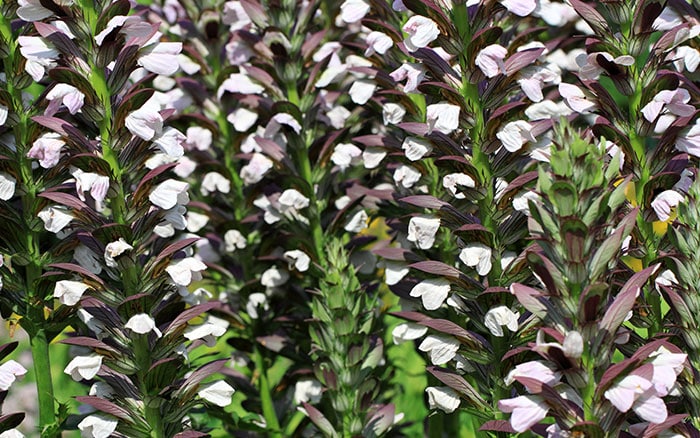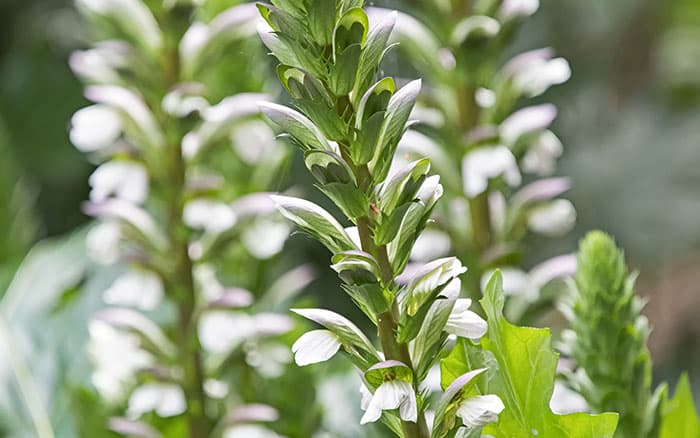Wonderfully architectural plants like acanthus have a bold impact when planted in a large border with their eye-catching foliage. Make a statement by planting bear’s breeches with these top tips on how to grow.
Some types tower above the border whilst others have more compact growth and are well-suited to small gardens and courtyard spaces.
Growing acanthus
Bear’s breeches like a well-drained soil and so enjoy plenty of sunshine, however they will tolerate shade, so can be planted under the partial shade of trees too. As long as the soil is well-drained through winter and doesn’t get waterlogged, they can tolerate most soil types.
Plant acanthus in bold planting schemes, taking pride of place at the front of a border where the architectural foliage is on show.

From May to August, the distinctive flowers bloom on upright columns, adding height to the display. The flowers have white outer petals that bloom from a purple bract. Pollinators such as bees love the flowers, making them a great addition to a wildlife garden. Not only do they look great in the border, but they look stunning as cut flowers in a vase or flower arrangement.
These plants are well-suited to many garden styles, including Mediterranean style gardens where their colour will contrast with fiery tones of red, orange and yellows. Alternatively, plant them in a cottage garden complemented by other purple and pink hues.
Acanthus can be planted in spring or autumn, by planting in a hole with some well-rotted manure to help boost growth. Bear in mind that one acanthus is planted in place it’s best to leave them in position and not disturb or try to move it.
In spring, it’s ideal to give the foliage a tidy up and cut the stems back after flowering in late summer.
Types to try
Acanthus mollis (bear’s breech)
The large glossy leaves are joined by white flowers in summer, with the upright plants growing up to 1.5m tall. The architectural growth makes it a perfect addition to Mediterranean style gardens.
- Flowers in summer
- Fully hardy
- Grows up to 1.5m tall
- Well-drained soil
- Full shade, full sun, or partial shade
- Exposed or sheltered

Acanthus hungaricus
This variety is very tolerant of shade, as they originally come from open woodlands where they grow beneath tree canopies. They’re a low maintenance addition to the garden, adding height and texture with their flowers and foliage.
- Flowers in summer
- Fully hardy
- Grows up to 1.5m tall
- Well-drained soil
- Full shade, full sun, or partial shade
- Exposed or sheltered

Acanthus spinosus (spiny bear’s breech)
The leaves of this type are smaller than the Acanthus mollis, but they still make an impact because the plant tends to produce more flower spikes. When established, they are drought tolerant, so can be a good addition to courtyard gardens and gravel gardens.
- Flowers in summer
- Fully hardy
- Grows up to 1.5m tall
- Well-drained soil
- Full sun or partial shade
- Exposed or sheltered

Bring some height and texture to your garden by growing acanthus. Give it the right conditions and you can have architectural flowers and foliage in your borders, even in a shadier spot.
David Domoney is a Chartered Horticulturalist, Broadcaster, and Author. David has worked with a number of the UK’s leading garden retailers as a plant buyer and strategic consultant. With more than 30 years experience, in horticulture, David is as passionate about plants now as he was when he bought his first plant at a village fete.







Leave A Comment